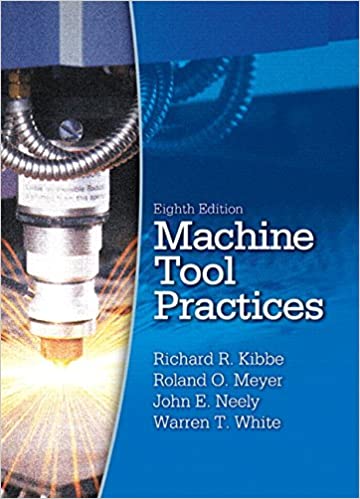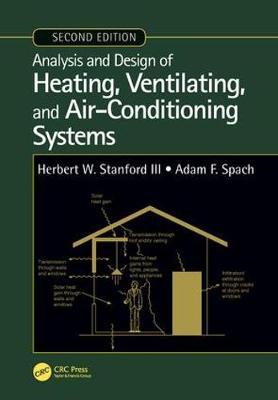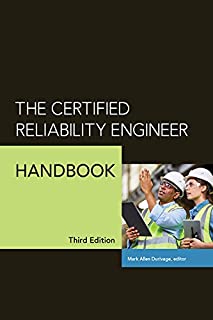Machine Tool Practices
Original price was: ₹16,520.80.₹13,216.64Current price is: ₹13,216.64.
ISBN: 9780131188969
Author/Editor: Richard R Kibbe
Publisher: Pearson
Year: 2006
1 in stock (can be backordered)
Description
For Machine Shop, Machine Technology, Machining Processes/Manufacturing Processes Technology, Industrial Technology, Industrial Mechanics, and Industrial Engineering courses at the undergraduate level.
Extremely comprehensive text covers the core subject areas essential for building the foundation required to effectively work in the machining area of today’s manufacturing technology. The text covers introductory through advanced topics with a vocational emphasis, and is intensely visual – illustrated with over 1500 photographs and line drawings of machine tools, measuring tools and machining processes. Each section is structured for use in self paced individualized instruction programs as well as in traditional lecture/lab programs. Each unit contains listed objectives, self tests with answers, and boxed material covering shop tips, safety and new technologies.
Additional information
| Weight | 1.991 kg |
|---|
Product Properties
| Year of Publication | 2006 |
|---|---|
| Table of Contents | (NOTE:Each number represents a Unit.) SECTION A: INTRODUCTION. 1. Shop Safety. 2. Mechanical Hardware. 3. Reading Drawings. SECTION B: HAND TOOLS. 1. Arbor and Shop Presses. 2. Work-Holding and Hand Tools. 3. Hacksaws. 4. Files. 5. Hand Reamers. 6. Identification and Uses of Taps. 7. Tapping Procedures. 8. Thread-Cutting Dies and Their Uses. 9. Off-Hand Grinding. SECTION C: DIMENSIONAL MEASUREMENT. 1. Systems of Measurement. 2. Using Steel Rules. 3. Using Vernier, Dial, and Digital Instruments for Direct Measurements. 4. Using Micrometer Instruments. 5. Using Comparison Measuring Instruments. 6. Using Gage Blocks. 7. Using Angular Measuring Instruments. 8. Tolerances, Fits, Geometric Dimensions, and Statistical Process Control (SPC). SECTION D: MATERIALS. 1. Selection and Identification of Steels. 2. Selection and Identification of Nonferrous Metals. 3. Hardening, Case Hardening, and Tempering. 4. Annealing, Normalizing, and Stress Relieving. 5. Rockwell and Brinell Hardness Testers. SECTION E: LAYOUT. 1. Basic Semiprecision Layout Practice. 2. Basic Precision Layout Practice. SECTION F: PREPARATION FOR MACHINING OPERATIONS. 1. Machinability and Chip Formation. 2. Speeds and Feeds for Machine Tools. 3. Cutting Fluids. 4. Using Carbides and Other Tool Materials. SECTION G: SAWING MACHINES. 1. Using Reciprocating and Horizontal Band Cutoff Machines. 2. Abrasive and Cold Saws. 3. Preparing to Use the Vertical Band Machine. 4. Using the Vertical Band Machine. SECTION H: DRILLING MACHINES. 1. The Drill Press. 2. Drilling Tools. 3. Hand Grinding of Drills on the Pedestal Grinder. 4. Operation Drilling Machines. 5. Countersinking and Counterboring. 6. Reaming in the Drill Press. SECTION I: TURNING MACHINES. 1. The Engine Lathe. 2. Toolholders and Toolholding for the Lathe. 3. Cutting Tools for the Lathe. 4. Lathe Spindle Tooling. 5. Operating the Machine Controls. 6. Facing and Center Drilling. 7. Turning between the Centers. 8. Alignment of the Lathe Centers. 9. Other Lathe Operations. 10. Sixty-Degree Thread Information and Calculations. 11. Cutting Unified External Threads. 12. Cutting Unified Internal Threads. 13. Cutting Tapers. 14. Using Steady and Follower Rests. 15. Additional Thread Forms. 16. Cutting Acme Threads on the Lathe. SECTION J: VERTICAL MILLING MACHINES. 1. Vertical Spindle Milling Machines. 2. Cutting Tools and Cutter Holders for the Vertical Milling Machines. 3. Setups on the Vertical Milling Machine. 4. Vertical Milling Machine Operations. 5. Using the Offset Boring Head. SECTION K: HORIZONTAL SPINDLE MILLING MACHINES. 1. Horizontal Spindle Milling Machines. 2. Types of Spindles, Arbors, and Adapters. 3. Arbor-Driven Milling Cutters. 4. Work-Holding Methods and Standard Setups. 5. Machine Setup and Plain Milling. 6. Using Side Milling Cutters. 7. Using Face Milling Cutters on the Horizontal Milling Machine. SECTION L: GRINDING AND ABRASIVE MACHINING PROCESSES. 1. Selection and Identification of Grinding Wheels. 2. Truing, Dressing, and Balancing of Grinding Wheels. 3. Grinding Fluids. 4. Horizontal Spindle Reciprocating Table Surface Grinders. 5. Workholding on the Surface Grinder. 6. Using the Surface Grinder. 7. Problems and Solutions in Surface Grinding. 8. Center-Type Cylindrical Grinders. 9. Using the Cylindrical Grinder. 10. Universal Tool and Cutter Grinder. SECTION M: COMPUTER NUMERICAL CONTROL AND OTHER ADVANCED MACHINE PROCESSES. 1. CNC Machine Tool Progammable Axes and Position Dimensioning Systems. 2. CNC Programming. 3. CNC Tooling. 4. Other Advanced Machining Processes. Appendix 1: Answers to Self-Tests. Appendix 2: General Tables. 1. Decimal Equivalents of Fractional Inches. 2. Inch/Metric Conversion Table. 3. Tap Drill Sizes. 4. Metric Tap Drill Sizes. 5A. Tapers. 5B. Tapers and Angles. 6. General Measurements. 7a. Density or Specific Gravity of Metals and Alloys. 7b. Approximate Melting Points of Metals and Various Substances. 8. Right-Triangle Solution Formulas. 9. Wire Gages and Metric Equivalents. 10. Cutting Speeds for Some Commonly Used Materials. 10A. Feeds for High-Speed End Mills. 10B. Coolants and Cutting Oils Used for General Machining. Appendix 3: Precision Vise Project Drawings. Glossary. Index. |
| Author | Richard R Kibbe |
| ISBN/ISSN | 9780131188969 |
| Binding | Hardback |
| Edition | 8 |
| Publisher | Pearson |
You must be logged in to post a review.






Reviews
There are no reviews yet.